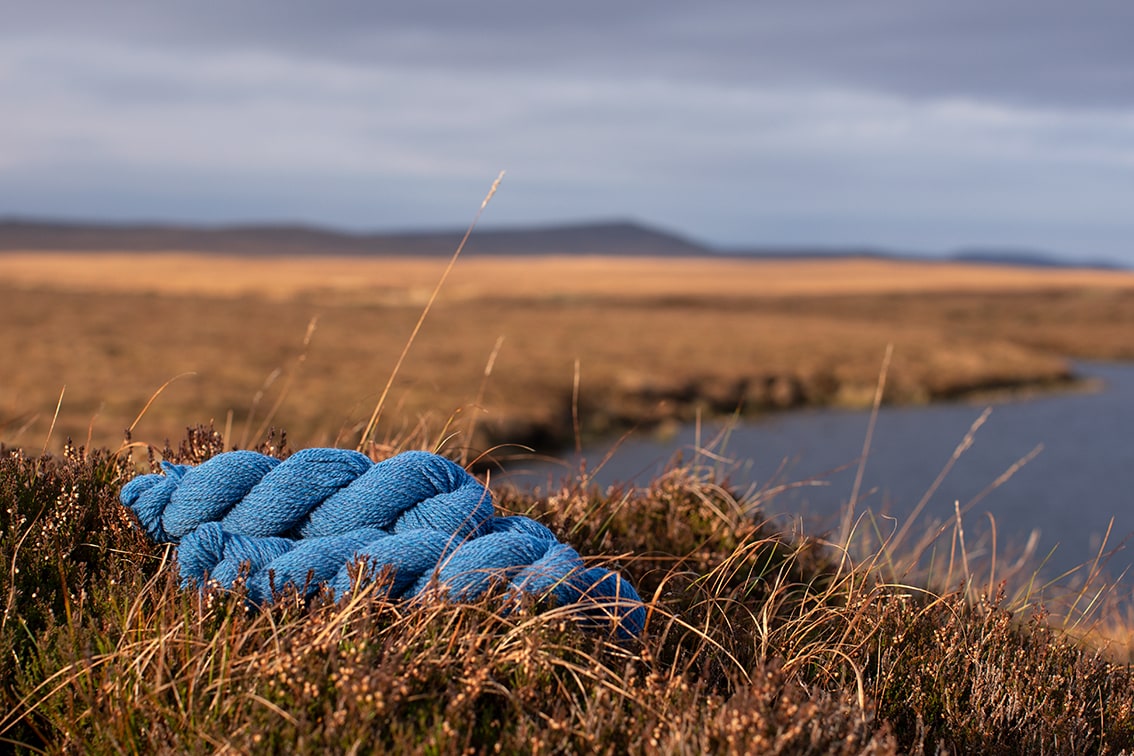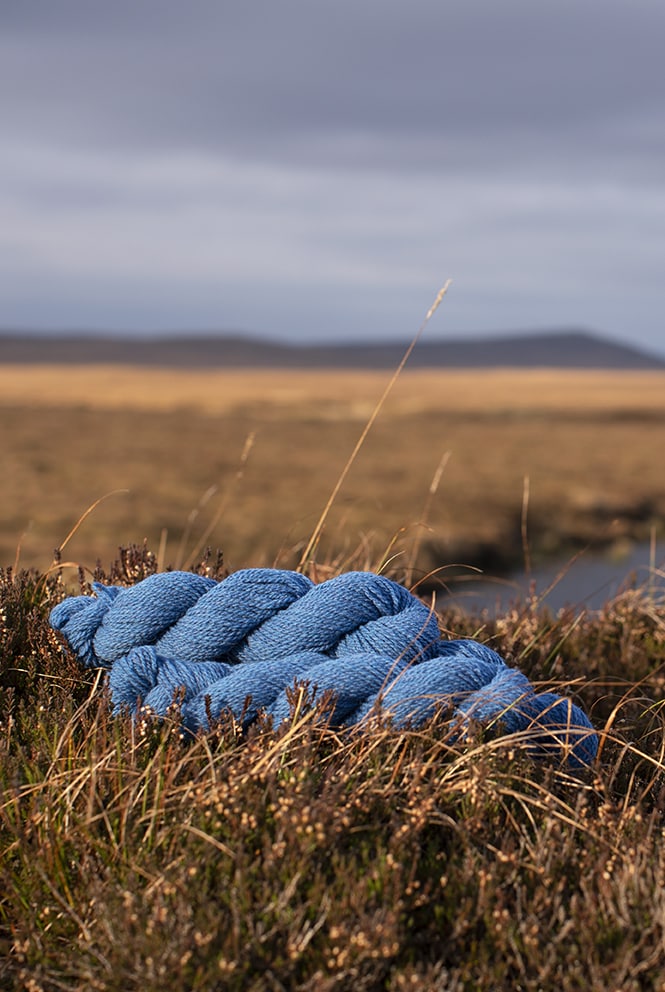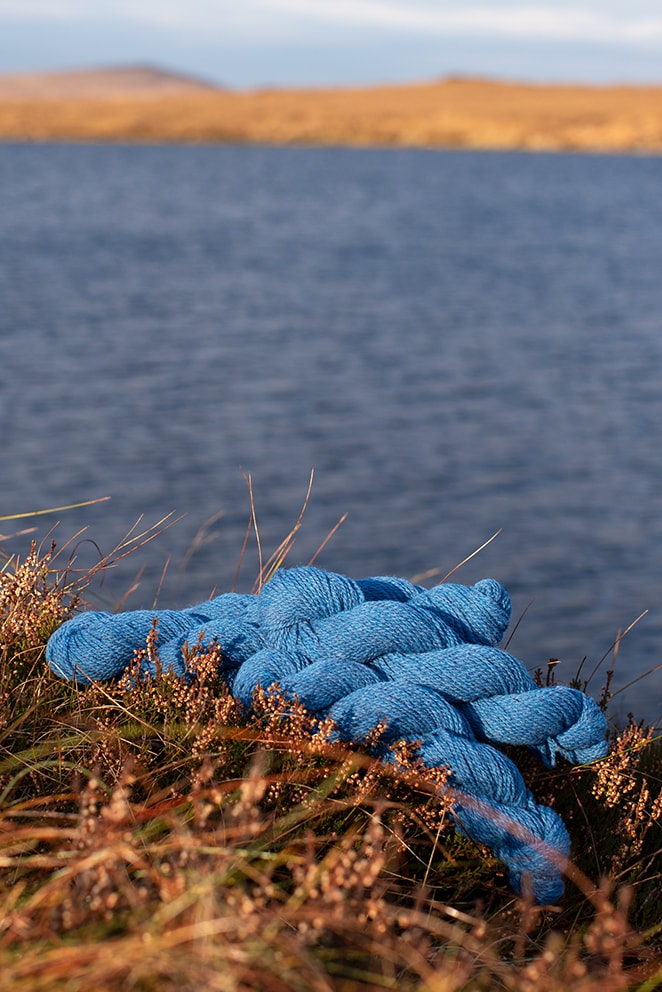Witchflower – 50g Hebridean 2 Ply
Description
Alice Starmore Hebridean 2 Ply Yarn is made from premium quality pure new British wool, dyed in the fleece and skillfully blended into unique shades. It is hand-washed and dried in the Hebridean air, and supplied in hand-made skeins which may vary in weight. It is priced per 50g at standard conditions. All yarn is weighed to order on balances that are checked daily to ensure that you receive the correct total amount.
Witchflower is part of the Summer Isle range, which is inspired by the tiny Summer Islands in the mouth of Loch Broom.
£8.00

Witchflower Colour Story
It is well-known that young women of the Highlands & Islands were constantly changing – or being changed – into swans, seals, hares and what have you, which frequently gave rise to them being shot, or some such tragedy. Believe that and you will believe anything – or maybe not, for as a child I would believe my bedtime stories for the duration of the telling. Here is such a temporarily believable tale from the south of Harris.
Long ago, on the rocky east coast of Harris, there lived a witch or what some would call a ban sith (pronounced ben-shee), or fairy woman. The magic of this witch was entirely for the good, which means it largely passed unnoticed, for while the folk of those times were all too quick to put adversity down to witchcraft, they would seldom realise that good fortune could be due to a similar cause. For example, the people of this rocky area, which was known as The Bays, had been "chased out" from their villages on the fair, sandy west coast with its fertile machair soil, for the absentee landlord of Harris wished to lease the best lands out to a wealthy mainland farmer for a greatly increased rent. When they arrived in The Bays the people despaired, for there were massive rocks everywhere, and nowhere was there a piece of tillable land larger than a tabletop. The witch, who had lived in The Bays for several centuries although she appeared no more than thirty years of age, placed spells of fertility on these tiny pockets of soil and made sure that they could produce enough oats to prevent starvation. She also placed the opposite of the evil eye upon their beasts so that milk and wool were always in plenty.
The eyes of this witch looked far from evil anyway, for they were a shade of blue that is only found in Tir Nan Og, or fairyland. Her plaids, which she spun and wove from her own sheep, were of strange colours also, for she knew of every plant that would yield a dye, and knew every rocky mountain crevice where the rarest plants grew. Wearing such plaids she could pass unseen beneath the very noses of the new arrivals, and often she would place spells of protection on the keels of their boats when they were upturned for the sabbath. Thus, their boats never struck rock or foundered in adverse seas.
Such constant care and vigilance took its toll upon the witch, and she began to grow tired. Every now and then she would have to sleep long and deeply.
The new settlers had no notion of the work being done on their behalf, and simply thought that fortune had smiled on them. The one thing "fortune" could not provide was land deep enough for them to bury their dead, for there was a limit to the witch's powers and she could not move the very rocks beneath her feet. Nor could she prevent the lives of others from running their natural allotted span, and soon burials did indeed have to take place. The villagers sent a deputation to plead with the Factor, as the landlord's business representative was called. He treated them as he always did – with the utmost disdain – but allowed them to continue using their old ancestral graveyard back over on the west side. In order to reach it however, the coffin had to be carried up from The Bays, over a rocky bealach, or saddle between two mountains, overlooked by a sheer crag called Creag an Eòin, or Crag of the Bird. The funeral procession had to be well fortified with drams in order to make the ascent. The coffin had to change hands many times and many stops were made. At each resting place, a cairn of loose stones was built, and these cairns would be added to on future processions (today, they are higher than a man). Once the pass was reached however, the journey was all downhill, and the hearts of the displaced villagers would lighten as they caught sight of the first flash of Atlantic aquamarine behind their old fertile machair lands. Then they would remember the extent of their loss and their tears would flow.
Because of the witch however, their tears did not flow as often as they might. At that time, there was a common fever of the new-born that was called the Five Night Sickness, for it peaked on the fifth night and no infant ever recovered from it. There were no physicians willing to treat the people of The Bays, and even if they had been, they would have been baffled by the sickness. The witch kept extra vigilance at the time of a woman's confinement, and by use of herbal charms called lusragan, she kept the Five Night Sickness away from their doors. This left her especially exhausted, and if there were several babies born one after the other, she was sometimes in a deep sleep when needed. Thus, infants were sometimes lost, but nowhere near as many as might have been. On such occasions, the witch would follow the procession up to the pass, hidden in her plaids of many strange colours. Her tears would flow along with those of the settlers, for she would weep with them and weep for her own failure. Wherever her tears landed, a small flower would grow that bloomed the same colour as her eyes. It grew thickest near to where the resting-place cairns were built, for here the witch would stand off to one side and weep silently. There were those perceptive enough to recognise the flowers as a sign of good. Such far-sighted folk would occasionally catch glimpses of the witch's strange eyes and shifting plaid as she moved about the mountainsides. It was these folk who named the blue-flowered plant lus nam ban sith, or Witchflower. The devil seethed with anger, and being fearful that the plant may have healing properties, tried to destroy it by taking bites out of the roots, which gave rise to its other name of Devil's Bit Scabious. In those parts of Gaeldom that did not have such a positive view of witchcraft, the term lus nam ban sith was applied to Foxglove, or digitalis. However, I think the good variant deserves a place on my mythical Summer Isle, so here it is … a spectacular blend of intense blues called Witchflower.
It is further told that the witch fell in love and crossed the boundary of her territory, thus casting aside her immortality. She is said to have lived a happy mortal life thereafter, but that – as they say – is another story.






